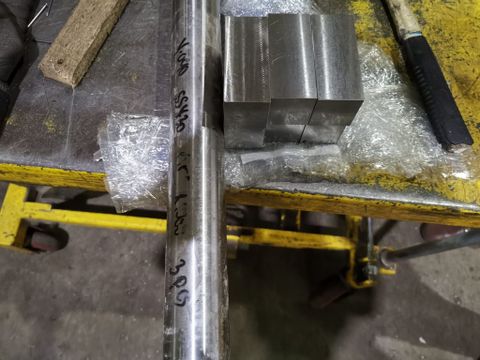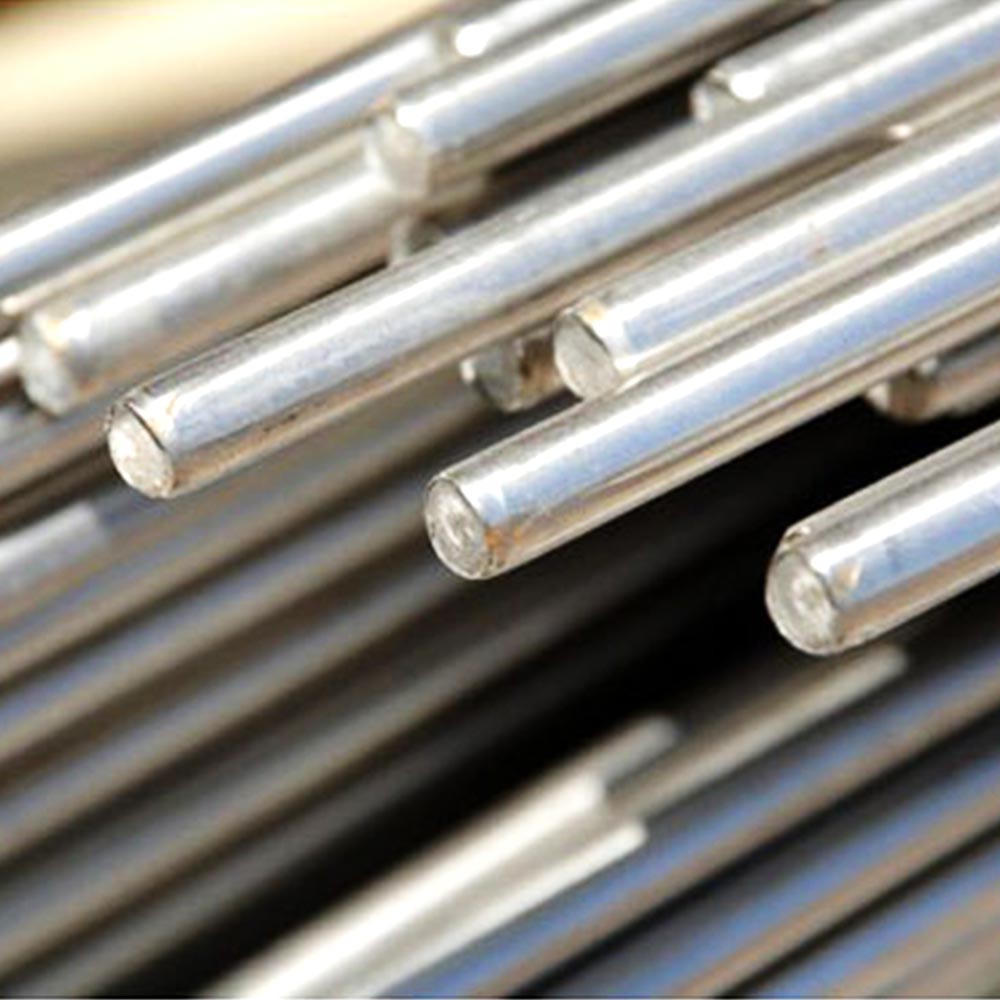Stainless Steel 430 | Stainless Steel Supplier Singapore | UNS S43000 | SUS430 | SUS430F | SS430 | aisi 430
Price:
R.F.Q.
Share Product:
Detail
E Steel Sdn Bhd - A Leading Supplier of Stainless Steel SUS430
Stainless Steel 430 (or known as SUS430)
Stainless Steel Grade 430 is a ferritic, straight chromium, non-hardenable grade, combining good corrosion resistance and formability characteristics with useful mechanical properties. Its ability to resist nitric acid attack permits its use in specific chemical applications but automotive trim and appliance components represents its largest fields of application.
Grade 430F is the free-machining version of this grade, available in bar form for use in automatic screw machines. Grade 434 is the molybdenum bearing version of Grade 430 and has the same useful combination of properties. Its molybdenum addition improves corrosion resistance.
----------
Key Properties :
These properties for 430 are specified for flat rolled product (plate, sheet and coil) in ASTM A240/A240M. Similar but not necessarily identical properties are specified for other products such as forgings and bar in their respective specifications. Properties of Grade 430F are specified for bar in ASTM A582.
----------
Composition :
Typical compositional ranges for grade 430 stainless steels are given in table 1.
| Grade | C | Mn | Si | P | S | Cr | Mo | Ni | N | |
| 430 | min.max. | –0.12 | –1.00 | –1.00 | –0.040 | –0.030 | 16.018.0 | – | –0.75 | – |
| 430F | min.max. | –0.12 | –1.25 | –1.00 | –0.06 | 0.15– | 16.018.0 | – | – | – |
Table 1. Composition ranges for 430 grade stainless steel
----------
Mechanical Properties :
Typical mechanical properties for grade 430 stainless steels are given in table 2.
| Grade | Tensile Strength (MPa) min | Yield Strength 0.2% Proof (MPa) min | Elongation (% in 50mm) min | Hardness | |
| Rockwell B (HR B) max | Brinell (HB) max | ||||
| 430 | 450 | 205 | 22 | 89 | 183 |
| 430F | 552 typical | 379 typical | 25 typical | – | 262 |
Table 2. Mechanical properties of 430 Grade stainless steel
----------
Physical Properties :
Typical physical properties for annealed grade 430 stainless steels are given in table 3.
| Grade | Density (kg/m3) | Elastic Modulus (GPa) | Mean Coefficient of Thermal Expansion(mm/m/°C) | Thermal Conductivity(W/m.K) | Specific Heat 0-100°C (J/kg.K) | Electrical Resistivity (nW.m) | |||
| 0-100°C | 0-315°C | 0-538°C | at 100°C | at 500°C | |||||
| 430 | 7750 | 200 | 10.4 | 11.0 | 11.4 | 23.9 | 26.0 | 460 | 600 |
| 430F | 7750 | 200 | 10.4 | 11.0 | 11.4 | 26.1 | 26.3 | 460 | 600 |
Table 3. Physical properties of 430 grade stainless steel in the annealed condition
----------
Grade Specification Comparison :
Approximate grade comparisons for 430 stainless steels are given in table 4.
| Grade | UNS No | Old British | Euronorm | Swedish SS | Japanese JIS | null | |
|---|---|---|---|---|---|---|---|
| BS | En | No | Name | null | |||
| 430 | S43000 | 430S17 | 60 | 1.4016 | X8Cr17 | 2320 | SUS 430 |
| 430F | S43020 | – | – | 1.4104 | X12CrMoS17 | 2383 | SUS 430F |
| These comparisons are approximate only. The list is intended as a comparison of functionally similar materials not as a schedule of contractual equivalents. If exact equivalents are needed original specifications must be consulted. |
Table 4. Grade specifications for 430 grade stainless steel
----------
Possible Alternative Grades :
Possible alternative grades to grade 430 stainless steels are given in table 5.
| Grade | Why it might be chosen instead of 430 |
| 430F | Higher machinability than 430 is needed in bar product, and reduced corrosion resistance is acceptable. |
| 434 | Better pitting resistance is required |
| 304 | Slightly higher corrosion resistance is needed, together with greatly improved ability to be welded and cold formed |
| 316 | Much better corrosion resistance is needed, together with greatly improved ability to be welded and cold formed |
| 3CR12 | A lower corrosion resistance is acceptable in a cost-critical application |
Table 5. Possible alternative grades to 430 grade stainless steel
----------
Corrosion Resistance :
430 has good resistance to a wide variety of corrosive media including nitric acid and some organic acids. It attains its maximum corrosion resistance when in the highly polished or buffed condition. In general its resistance to pitting and crevice corrosion resistance is close to that of grade 304. Stress corrosion cracking resistance of Grade 430 is very high, as it is for all ferritic grades.
Like other high-sulphur free-machining grades 430F has much reduced resistance to pitting and crevice corrosion compared to its non-free machining equivalent, particularly in the cross-section direction.
----------
Heat Resistance :
Resists oxidation in intermittent service up to 870°C and to 815°C in continuous service. This grade may become brittle at room temperature after prolonged heating in the 400-600°C range. This effect can be eliminated by annealing.
----------
Heat Treatment :
Solution Annealing – Heat to 815-845°C, hold for ½ hour per 25mm of thickness, slow furnace cool to 600°C and then quickly air cool. Slow cooling from 540-400°C will cause embrittlement.
Sub-Critical anneal – Heat to 760-815°C and then air cool or water quench.
This grade is not hardenable by thermal treatment.
Note that 430 is likely to scale more heavily at elevated temperatures than 304, and the scale produced is more difficult to remove by pickling.
----------
Welding :
If welding is necessary pre-heat at 150-200°C. Embrittlement in the weld metal and heat affected zone can be relieved by a post-weld anneal at 790-815°C, but grain refinement will not occur. Use Grade 430, 308L, 309 or 310 filler rod, depending upon application. AS 1554.6 pre-qualifies welding of Grade 430 with Grade 309 filler rods and electrodes.
----------
Machining :
Grade 430 is easier to machine than the standard austenitic grades such as 304, but there is still a tendency for galling and pick-up on the cutting tool. Bars that have been lightly drawn are easier to machine than those in the annealed condition. Grade 430F, the free machining version of 430, is very much easier to machine.
----------
Fabrication :
The lower work hardening rate makes bending and forming somewhat easier than for grade 304, but the lower ductility restricts very severe operations. Wherever possible severe bends should be made with the bend axis at right angles to the rolling direction. Severe cold heading of 430 wire is possible.
If very severe cold working is required it may be necessary to carry out a sub-critical intermediate anneal.
----------
Applications :
Typical applications for 430 grade include:
- Linings for dish washers
- Refrigerator cabinet panels
- Automotive trim
- Lashing Wire
- Element Supports
- Stove trim rings
- Fasteners
- Chimney Liners
Typical applications for 430F grade include:
- Repetition machined components
Catalogue Download

